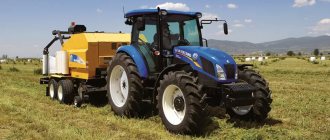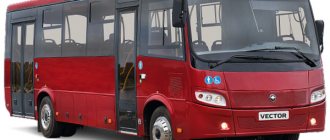List of recommended lubricants, working fluids and substitutes for UAZ
Lubricants
- motor oil
M-8-V, GOST 10541-78 or M-6z/10-V (DV-ASZp-10V) OST 38.01370-84. Northern automobile oil M4z/6V1 OST 38.01370-84. - transmission oil
TSp-15K GOST 23652-79. Substitute: automotive transmission oil TAP-15V or TAD-17I OST 23652-79. At temperatures below minus 20 °C, automotive transmission oil TSp-10 GOST 23652-79. - Lubricant
"Litol-24" GOST 21150-87, "Lita" TU 38.1011308-90 or "Litol-24RK" (grease SHRUS-4 - an analogue of "Litol" with the addition of molybdenum disulfide and other additives that reduce wear) - Graphite lubricant
USSA GOST 3333-80. - Grease
CIATIM 201 GOST 6267-74, CIATIM-221 GOST 9433-80.
Working fluids
- Coolant
TOSOL-A40M, TOSOL-A65M TU 6-02-751-86 (use in winter OZH-40, OZH-65 GOST 28084-89 is allowed) or “Lena-40”, “Lena-65” TU 113- 12-11.104-88. The water is clean and “soft” (rain, snow, boiled). - Shock absorption fluid
AZh-12T GOST 23008-78. Substitute: spindle oil AU OST 38.01.412-86. - Brake fluid
“Tom” TU 6-01-1276-82, “Rosa” TU 6-55-37-90, “Neva” TU 6-01-1163-78, GTZh-22 TU 6-01787-75 (see . also opinions about different brake fluids) - Electrolyte
with density, g/cm3: 1.25 - for areas with temperatures up to -10 ° C; 1.27 - for areas with temperatures up to -30 ° C; 1.29 - for areas with temperatures up to -40 ° C (see also the article “Battery”) - Gasoline
A-76 GOST 2084-77, summer or winter grades.
up
Refueling data for wagon-type vehicles
Name
Car models
* It is possible to install only the main tank ** Including starting heater Engine 417 mod., 4-speed gearbox top
Standards for consumption of fuels and lubricants in road transport Р3112194-0366-97
approved by the Ministry of Transport of the Russian Federation on February 18, 1997. Valid until 01/01/2002) (Only basic figures, only in relation to UAZ vehicles. Full document: local copy from the Avto-Garant website)
Fuel consumption rates
The standards include the fuel consumption required to carry out the transport process. Installed for general purpose vehicles. basic rate in liters per 100 km of vehicle mileage.
Fuel consumption rates increase (including) under the following conditions:
- work in winter: in the southern regions of the country - up to 5%, in the northern regions of the country - up to 15%, in the Far North and areas equivalent to the Far North - up to 20%, in other regions of the country - up to 10% ( the maximum values of winter allowances for almost all regions of central Russia are 10%, valid for 5 months a year);
- work in cities with a population of over 2.5 million people - up to 20%; with a population of 0.5 to 2.5 million people - up to 15%; with a population of up to 0.5 million people - up to 10%;
- when driving the first thousand kilometers with cars that have undergone major repairs and new ones, as well as. when driving such vehicles under their own power - up to 10%;
- for cars that have been in operation for more than 8 years - up to 5%;
- work in difficult road conditions during seasonal thaw, snow or sand drifts, floods and other natural disasters - up to 35%;
Fuel consumption rates are decreasing (including):
- when working on roads outside the suburban area made of cement concrete, asphalt concrete, paving stones, mosaics on flat, slightly hilly terrain (altitude up to 300 m) - up to 15%.
In the case when the car is operated outside a city with a population of more than 2.5 million people. in a zone up to 50 km from the city border, as well as for cities with a population of 0.5 to 2.4 million people. in an area up to 15 km from the city border and with a population of less than 0.5 million people. in a zone of up to 5 km, correction factors (increasing or decreasing) are not applied. If it is necessary to apply several surcharges simultaneously, the fuel consumption rate is set taking into account the sum or difference of these surcharges.
. For internal garage travel and technical needs. fuel consumption increases to 1.0% of the total; when vehicles are idle. in the winter and cold seasons with the engine running, set the standard fuel consumption at the rate of one hour of idle time corresponding to 5 km of vehicle mileage. For vans working on an hourly basis, the standard fuel consumption value is determined similarly to passenger cars, taking into account the surcharge for work with an hourly rate (10%).
Basic linear fuel consumption rate for vehicle mileage, l/100 km:
Lubricant consumption rates
Lubricant consumption rates are set per 100 liters of total fuel consumption, calculated according to the standards for a given vehicle. Oil consumption rates are set in liters per 100 liters of fuel consumption, lubricant consumption rates are set in kilograms per 100 liters of fuel consumption, respectively. Oil and lubricant consumption rates are reduced by 50% for all vehicles in use for up to three years. Oil consumption rates increase to 20% for vehicles that have been in operation for more than eight years.
Consumption rates per 100 liters of total vehicle fuel consumption for models UAZ-469, -3151, -452, -2206, -3962, -450, -451, -452, -3303, -3741, -450A, -451A, -374101 , 396201 of all modifications is: Engine oil 2.2 l Transmission oil 0.2 l Special oil 0.05 l Grease 0.2 kg
Fuel and lubricant consumption standards 2022 Ministry of Transport of the Russian Federation table
Hello, in this article we will try to answer the question: “Fuel and lubricant consumption standards 2022 table of the Ministry of Transport of the Russian Federation.” You can also consult with lawyers online for free directly on the website.
The Ministry of Transport of the Russian Federation has issued changes to fuel consumption standards. It is no longer possible to use previous editions. Below is the order of the Ministry of Transport of the Russian Federation in its current edition for 2022, including the latest table of fuel consumption rates, so you can use the data to determine the fuel consumption rate for 2022 for any car.
Fuel consumption standards from the Ministry of Transport of the Russian Federation (latest edition): How to bleed the brakes
The costs of reducing the tax base include all costs associated with the purchase of fuel, regardless of the method of payment, but they must be justified for the company’s activities in order to increase profits. The consumption rate of fuel or lubricant, in relation to road transport, implies an established value for the measure of its consumption when operating a vehicle of a particular model, brand or modification.
| Deputy Minister | ON THE. Asaul |
General table for all cars since 2008 © How to install the ignition
| UAZ 3303: 330301, 330302, 33036, 330365, 330394, technical characteristics, onboard, dump truck, body size, new, price, load capacity, owner reviews, fuel consumption per 100 km, dimensions, electric Summer time for Moscow and the Moscow region from April to October, for the Kemerovo region from May to October, for the Kaliningrad region from March 15 to November 14, for the Magadan region from May 1 to October 14, and so on for the constituent entities of the Russian Federation is given in Appendix 2 of the above methodological recommendations of the Ministry of Transport of the Russian Federation. It is carried out with the aim of increasing the efficiency of the company's production activities while minimizing costs associated with the consumption of fuels and lubricants. |
- Taking into account the standards created by employees of the Ministry of Transport of the Russian Federation;
- Without taking into account this regulatory framework.
Calculation of fuel consumption rates
The consumption rate of fuels and lubricants in relation to road transport implies the established value of the measure of its consumption (standard fuel consumption) when operating a vehicle of a specific model, brand or modification.
The consumption standards for fuels and lubricants in road transport are intended for calculating the standard value of fuel consumption at the point of consumption, for maintaining statistical and operational reporting, determining the cost of transportation and other types of transport work, planning the needs of enterprises for the supply of petroleum products, for calculating the taxation of enterprises, implementing mode of economy and energy conservation of consumed petroleum products, settlements with vehicle users, drivers, etc.
When normalizing fuel consumption, a distinction is made between the basic value of fuel consumption, which is determined for each model, brand or modification of a car as a generally accepted norm, and the calculated standard value of fuel consumption, which takes into account the transport work being performed and the operating conditions of the vehicle.
In accordance with the regulatory document “NORMAL CONSUMPTION OF FUELS AND LUBRICANTS IN ROAD TRANSPORT”, approved by Order of the Ministry of Transport of Russia No. AM-23-r dated March 14, 2008 (as amended by Orders of the Ministry of Transport of Russia dated May 14, 2014 No. NA-50-r , dated 07.14.2015 No. NA-80-r, dated 04.6.2018 No. NA-51-r, dated 09.20.2018 No. IA-159-r), for models, brands and modifications of automotive vehicles entering the country’s vehicle fleet, on which the Ministry of Transport of Russia has not approved fuel consumption standards (not included in this document), the heads of local administrations of regions and enterprises can put into effect by their order the standards developed on individual applications in the prescribed manner by scientific organizations developing such standards using a special program-methodology.
Specialists of OJSC NIIAT calculate fuel consumption standards for models, brands and modifications of automobile vehicles using a special program-method R 031112134-0367-97, approved by the Ministry of Transport of Russia. To perform the calculation, it is necessary to fill out an application in the prescribed form and send it to the research department “Application of fuel, lubricants and operating materials (FCEM) in the transport complex.”
Modifications
UAZ-452 is a van, the main modification of the UAZ-452A is an ambulance, popularly nicknamed the “tablet”. The car could accommodate up to 4 stretchers or six on benches and one accompanying person in both cases. The ambulance did not provide comfort when moving, the suspension remained with the standard model, but was the only ambulance capable of reaching the most remote places.[1]UAZ-452AS - a northern version of the ambulance
UAZ-452AE - a chassis for installing various equipment UAZ-452V - a ten-seater minibus with a carriage layout UAZ-452D - a truck with a double cabin and a wooden body UAZ-452G - an ambulance, differs from the UAZ-452A in capacity UAZ-452K - an experimental 16-seater three-axle bus, (6x4) (1973). UAZ-452P - truck tractor
UAZ fuel consumption standards © Calculation for trucks
| Fuel consumption standards for special and specialized vehicles When vehicles move at a reduced average speed when transporting non-standard, large, heavy, dangerous goods, cargo in glass and other similar goods, when driving in convoys when accompanied by vehicles with cover vehicles in the range of 20-40 km h to 15, the same with an average speed below 20 km h to 35;. Certificate for visual inspection and measurement of the weld, form 2. Report for cutting production welded joints, form 3. Report for checking the internal cavity of the pipeline by running a ball, form 4. |
| UAZ 128811 ambulance fuel consumption rate Newly developed and established standards for cars act as temporary until they are introduced as permanent or upon re-approval or addition to the Guiding Document taking into account the development of the structure of the country's vehicle fleet. kW rpm 112 82.5 4250 Maximum torque, Nm rpm 198 2500 Mechanical gearbox, All-wheel drive, with plug-in front wheel drive Tires 225 75 R16 Maximum speed, km h 127 Acceleration time 0-100 km h, s Fuel consumption at a speed of 90 km h, l 100 km 13.5 Fuel tank capacity, l 50 27 Fuel type gasoline AI-92. |
UAZ fuel consumption rate • operation in populated areas with a large population from 5 to 35;.
UAZ has acceptable fuel consumption!
This document provides the values of basic, transport and operational, taking into account surcharges, fuel consumption standards for automotive rolling stock, fuel consumption standards for the operation of special vehicles, the procedure for applying standards, formulas and methods for calculating standard fuel consumption during operation, reference standard data on lubricant consumption and special liquids, the value of winter allowances, etc., regardless of the form of ownership operating automotive equipment and special rolling stock on vehicle chassis in the territory of the Russian Federation.
Cost of UAZ-220695-04
The fact that the “loaf” minibus has once again “increased the retirement age” was enthusiastically received by many people in the Russian outback, as well as urban hunting and fishing enthusiasts. The UAZ-220695-04 is still valued for its simplicity, spaciousness, phenomenal cross-country ability and modest price - the basic version costs only 650 thousand rubles. There are no other all-wheel drive minibuses for that kind of money and there never will be. On the secondary automobile market, a used “loaf” in the minibus version can be purchased at a price half or three times less.
By the way, in honor of the 60th anniversary of the legendary model, the Ulyanovsk Automobile Plant released an anniversary version of the minibus in 2022, for 765,000 rubles. Its distinctive feature is a two-color body (light green, with a top painted in glossy white), a bright nameplate on the side with an antique-style UAZ symbol and the year the family began production, as well as wheels of the same white color.
Table of fuel costs for UAZ brands. © GSM accounting subtleties
The operating principle of the AdBlue system is a chemical reaction of ammonia with nitrogen oxide in the exhaust gases, resulting in the formation of harmless nitrogen and water vapor. AdBlue is a reagent that is used as an additional working fluid in diesel engines of Euro 4 Euro 6 standard, equipped with an SCR Selective Catalytic Reduction system to ensure clean emissions.
| Condition | Coefficient % |
| Work in winter | until 5-20 |
| Work in mountainous areas | until 5-20 |
| Working outside the city on roads with complex layouts | up to 30 |
| Working in an urban environment | up to 5-35 |
| Stop-and-go operation | to 10 |
| Working at reduced speed | until 15-35 |
| Running in new cars or after major repairs | to 10 |
| Driving a car under your own power | until 10-20 |
| For cars over 5 years old or with mileage over 100 t.km | up to 5-10 |
| For trucks, vans, cargo taxis | to 10 |
| When working as a technological transport | up to 20 |
| When operating special vehicles (truck, fire, ambulance, aerial platform, etc.) | up to 20 |
| When working in quarries | until 20-40 |
| When working in extreme climatic or difficult road conditions | up to 35-50 |
| During training driving | until 20-40 |
| When using air conditioning or climate control | up to 7 |
Design and construction
The UAZ 2206 cannot boast of a special exterior design, everything is very simple and not much different from the cars of the UAZ-452 family, the same all-metal body, carriage layout, round headlights, etc. In general, the appearance is a C grade. In the same way, the minibus cannot boast of a special level of comfort and is inferior to many cars of its class. But, despite the shortcomings of the interior and exterior, the car is quite durable and unpretentious in operation.
The bus is available in two versions with 9 and 10 seats. The 9-seater bus is equipped with an easily removable table, a small thing, but nice. The car's interior can boast of soft door upholstery, three lampshades (1 in the cabin and 2 in the cabin), there is a rear-view mirror, as well as a box for small items in the instrument panel, which, by the way, can be replaced with a radio. Optionally, the factory can install heated front seats, but for 5,000 rubles.
As a power unit, UAZ 2206 cars received a ZMZ-40911.10 engine with a volume of 2693 cm3 and a power of 112 horsepower at 4250 rpm. This engine consumes up to 11.2 liters of gasoline with an octane number of 92 per 100 kilometers at a speed of 80 kilometers per hour, and the maximum speed is 127 km/h.
Iveco – Calculation for buses
| Fuel and lubricant consumption standards 2022 Ministry of Transport of the Russian Federation table | Legal business According to the amendments to the document, the procedure for calculating fuel and lubricant standards has been clarified; fuel consumption standards have been introduced for vehicle models of both domestic and CIS countries, as well as foreign manufacturers produced since 2008. GAZ-27057 GAZ-560-4L- 2.134-95-5M 13.7 D UAZ-3303-0001011APV-04-01 4L-2.445-92-4M 17.5 B UAZ-3741 UMZ-4178-4L-2.446-90-4M 16.5 B UAZ-3741 UMZ-4178-4L-2,446-76-4M 16.8 B UAZ-3741 DISA-1912 Zaslon 4L-2,445-92-4M 17.6 B UAZ-374101, -396201 17.0 B UAZ-3909 g p UMP- 4178-4L-2,445-90-4M 16.5 B UAZ-3909 g p UMP-4178-4L-2,445-76-4M 18.5 B UAZ-3909 g p ZMZ-40210L-4L-2,445-81-4M 17 ,3 B UAZ-3909 UMZ-4178-4L-2,446-92-4M 16.8 B UAZ-39099 Farmer g p UMZ-4218. |
- Basic standard for gasoline consumption in liters per 100 km in running order.
- Transport standard in liters per 100 km in operation (during transport work), including:
- cost standard for a bus taking into account curb weight and nominal passenger load;
- consumption standard for dump trucks, taking into account equipment and nominal vehicle load.
- Transport standard for a truck in liters per 100 ton-kilometers, determined during transport work.
UAZ Simbir • Standard for equipment operation, l h.
Car in culture[edit | edit code]
In cinema[edit | edit code]
Over the years, cars of the UAZ-452 family have appeared in domestic and foreign films of various genres[8].
In the gaming and souvenir industry[edit | edit code]
- From 1983 to 1987, a scale model of the UAZ-2206 was produced under the number A41 Saratovsky. (Agate Mossar)
- They continue to produce the numberless UAZ-2206, UAZ-3909*, UAZ-3741 in passenger, cargo-passenger, cargo versions, as well as in the intensive care version with minor simplifications, such as the loss of chrome parts and welded doors.
- The Chinese series “Autotime collection”, “Carline” and “Technopark” produce UAZ-39625 car models in various versions.
- In 2009, a sand-colored 1:43 scale model of the UAZ-2206 was released as part of the “Autolegends of the USSR” project from the publishing house “De Agostini”. Also, in 2011, as part of the “Car in Service” project, the UAZ-3909 was released in the “Emergency Gas Service” version, and in 2012 - the UAZ-3741 in the “Russian Post” version.
- In 2022, a kit model of the UAZ-3909 performed by Russian Post in 1:43 scale was released.
- In 2022, a 1:24 scale model of the UAZ 452V in a two-color version was released as part of the “Legendary Soviet Cars” project from the Hachette collection publishing house. Circulation - 8600 pcs.
Qn = 0.01 x Hs x S x (1 + 0.01 x D) + Hot x T, (2)
A vehicle requires fuel to operate. Each category of car requires different volumes of fuel and lubricants. The Ministry of Transport has developed a special standard - this is the fuel consumption rate for car brands. The standard allows you to determine how much fuel and lubricants a specific brand of vehicle requires to support the technological process. The standards are developed only in relation to the operating process of vehicles. For example, it is unacceptable to use values to calculate the write-off of fuel and lubricants during repair, adjustment or testing. For technological purposes, additional fuel consumption standards (FLC) should be established.
UAZ Patriot details about fuel consumption
The main role in the supply of liquid is played by the right, main, container in which the fuel pump is located.
We recommend reading: Application to the prosecutor's office for exceeding the official powers of the FSSP
The secondary, respectively, left tank. The essence of using fuel is that the pump first draws liquid from the auxiliary tank, and only then uses it from the main one.
It takes a considerable amount of time to determine the actual amount of fuel capacity. When the right tank is filled, after reaching the 50% mark, the substance begins to flow into another container.
The same thing happens again when half of the left tank is filled. Therefore, it is very difficult to obtain the final result with completely filled tanks, although it is possible after a fairly long period of time. Determining the real fuel consumption of the UAZ Patriot is also hampered by the specific operation of the fuel pump.
Prices and similar machines
The price of a car without mileage starts from 677 thousand rubles. The only option offered for the car is heated front seats. The equipment will cost the buyer an additional 7 thousand rubles.
A car is a faithful friend and assistant of every person, especially if he does not like to travel on foot or in public transport. If you just need a car to transport goods and passengers, then you can pay attention to models made in the Soviet Union. They have huge advantages in comparison with modern copies. The most significant are cross-country ability and cost.
The UAZ-220695 “Loaf” is a combined minibus and all-terrain vehicle. To some, these types of machines may seem incompatible, but in reality this is not the case. This vehicle will help in any matter: transporting goods or passengers, and on absolutely any roads or off-roads. The body and frames are very reliable. Moreover, the consumer appreciates ease, ease, and intuitive control. All this has been tested for several generations; no one said that this car is bad. In addition, modifications of various colors were available for sale.
Table of fuel consumption rates from the order of the Ministry of Transport
The law does not prohibit ignoring the standards established by the Ministry of Transport, but, however, if the costs of fuel and lubricants are too high and significantly diverge from the indicators of this ministry, then an investigation may be launched, since such a state of affairs may indicate fraud or theft. The consumption rate of fuels and lubricants in relation to road transport implies a set value for the measure of its consumption when operating a vehicle of a specific model, brand or modification.
Owner reviews and how much the car costs • How to install the ignition
| The fuel and lubricants write-off standards for 2022 are in the table - Ministry of Transport of the Russian Federation where Qn is the UAZ fuel consumption rate per 100 km, l; Hs transport norm of fuel consumption for mileage of a UAZ bus, l 100 km, taking into account the passenger load normalized by class and purpose of the bus; S bus mileage, km; Not the rate of fuel consumption when using standard independent heaters for the operation of the heater heater, l h; T operating time of a UAZ bus with the heater on, h; D correction factor is the total relative increase or decrease to the norm. It is worth noting that the spring of 1956 was marked for the Ulyanovsk Automobile Plant with an order to carry out design work that would make it possible to create completely new cars. |
- Brake and coolant fluids.
- All types of fuel (gas, diesel, gasoline);
- Lubricants (oils, lubricants used in the process of repair, maintenance and operation of vehicles);
Device and technical characteristics
Cars use a ladder frame. The spars are equipped with internal reinforcements that increase structural rigidity. The front axle is equipped with springs and hydropneumatic shock absorbers. Some cars have a stabilizer bar installed, which improves the suspension parameters. The rear axle is equipped with hydraulic shock absorbers and springs with additional leaves that operate when the vehicle is loaded.
The steering mechanism received a hydraulic booster (the device was not available on cars assembled in the 90s and earlier). The front hubs are mounted on steering knuckles equipped with constant velocity ball joints. The steering column is not adjustable.
The machines use a 4-cylinder in-line engine ZMZ-409, equipped with a fuel injection system. The unit develops a power of 112 hp. at 4250 rpm. A special feature of the engine is the use of a block with a volume increased to 2693 cm³ and a 16-valve head. The exhaust system is equipped with a closed-loop catalytic converter. The motor complies with Euro 4 and 5 toxicity standards. The liquid cooling system is designed for the installation of an additional heater.
Early releases used a 90-horsepower carburetor engine with a displacement of 2445 cm³. Some vehicles use a 99-horsepower injection unit UMZ-4213 with a cylinder capacity of 2.89 liters. Some engines were equipped with an exhaust gas aftertreatment system.
All engine types are equipped with a dry friction clutch with 1 working disc. The machines are equipped with a 4-speed gearbox with synchronized forward speeds. Equipment assembled after 2016 is equipped with a modernized 5-speed gearbox with overdrive. The use of the unit made it possible to reduce average fuel consumption to 11.2 liters per 100 km (at a speed of 80 km/h).
The transmission includes a 2-stage transfer gearbox with low gear. The main gears of a unified type consist of a bevel pair and a 4-satellite differential. The design of the transmission allows the installation of power take-off gearboxes.
Some vehicles use Spacer drive axles. The rear axle differential is equipped with a locking clutch. The unit is controlled using a button located on the instrument panel. The car is equipped with stamped steel wheels with tubeless tires size 225/75R16.
The brake mechanisms are hydraulically driven. Early versions used drums; later, the front axle was equipped with disc units that ensure effective deceleration. A drum-type parking brake is installed at the outlet of the transfer case, allowing for towing a trailer weighing up to 1500 kg (when the brakes are installed).
The electrical circuit is built according to a 1-wire circuit, the negative poles are connected to the car body. Generators from various suppliers are used. Injection engines are equipped with a controller manufactured by Bosch; parts from other manufacturers are also available. Protective fusible links of the electrical circuit are located in the vehicle interior; an additional bimetallic element is used. The ABS hydraulic unit is equipped with separate fuses.
The vehicles are equipped with 2 fuel tanks, designed for 50 and 27 liters of fuel. The containers are combined into a common system; the liquid level indicator is equipped with a switch for selecting the tank. Carburetor cars are designed to use A76 gasoline, while injection engines require the use of A95 or A92 fuel.
The machines use a combination of instruments with analogue indicators. Since 2015, a modified unit has been found, equipped with a liquid crystal screen and an electronic odometer. An on-board computer is installed in the instrument cluster. For interior ventilation, a special hatch is made on the front of the car. Additional air flow is created through rotary windows and lowered glass in the doors. There are air outlet grilles on the rear of the body.









